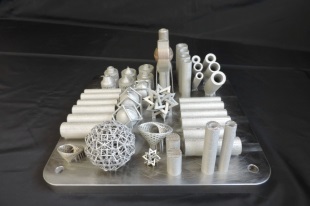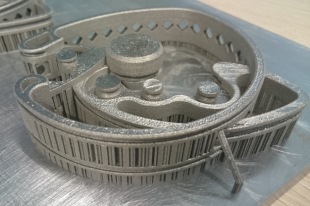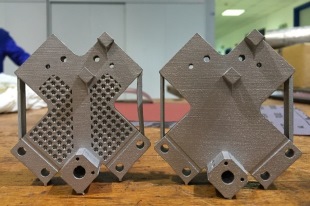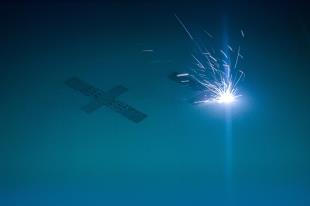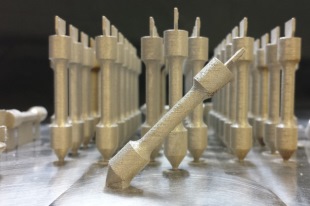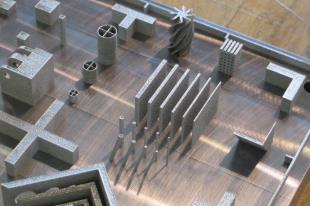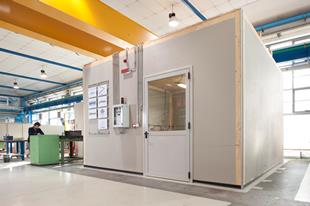

Description:
The research activities carried out in this lab span across different fundamental and applied disciplines, both using experimental and computational methods. The lab is equipped with several facilities for Additive Manufacturing of metals, including Laser Powder Bed Fusion, Electron Beam Melting, Directed Energy Deposition of wires and powders, Binder Jetting, and Cold Spray, systems for bioprinting and for building large structures with fibre-reinforced composites and polymers. Our research mainly focuses on design methods for additive manufacturing, development of new materials and technological solutions, process monitoring, structural/functional design, post-process treatments, and testing of materials and components.
References:
BLM group, Fonderia Maspero SrL, Marposs SpA, Sapio SPA, Titalia SpA, Ansaldo Group, Leonardo Helicopters, Ferrari, Lucchini, GE Avio.
Instruments & Facilities:
- Renishaw AM250 laser powder bed fusion system, featuring a build volume of 250 mm × 250 mm × 300 mm
- 3D-NT open laser powder bed fusion system, featuring a build volume of ø150 mm x 150 mm and 250W Yb:Glass nLIGHT fiber laser with temporal and spatial beam shaping capability, coaxial and off-axis monitoring, high temperature preheating
- In-house built LPBF prototypes. Penelope with in-situ monitoring and defect correction system. Powderful with multi-material deposition capability. Grisù with preheating temperatures up to 1000°C
- ExOne Innovent+ Binder Jetting system with a build volume of 160 mm x 65 mm x 65 mm
- Laser Directed Energy Deposition system with 3 kW IPG fiber laser, two-cylinder powder feeder, coaxial powder deposition head, coaxial wire deposition head and ABB anthropomorphic robots with tilting/ rotating table
- Trumpf Powerweld micro laser metal wire deposition (µLMWD) system with 250 W pulsed wave Nd:YAG laser and lateral wire feeder
- Arcam A2 electron beam melting system with 3500 W beam power, build volume of 210 mm x 210 mm x 350 mm and 8000 m/s maximum scan speed
- High-pressure Cold Spray System Impact Innovations 5/8, pre-heating gas Nitrogen, max gas pressure 50 bar, max gas temperature 800°C, water-cooled nozzle, max powder deposition rate 10 kg/h
- Desktop Metal Studio System+ Bound Metal Deposition (BMD) system for metal parts with parts up to 150 mm height and 1kg weight sintered state using 0.25 mm nozzle diameter
- Efesto flexible extrusion based additive manufacturing system
- Lumen X and BioX for bioprinting
- Facility for big area additive manufacturing (BAAM) of fibre-reinforced composites
- Equipment for mixing, milling, sieving and handling of powder
- Malvern Morphologi 4 automated imaging system for particle characterization
- Freeman Technology FT4 Powder Rheometer for flowability characterization of metal powder
- 3D X-Ray CT-Scan microtomography equipment that can be operated with X-ray energies from 10 to 160 keV, in a volume of diameter 15 cm and height 22 cm
- Materialise Magics to repair/modify 3D models, generate lattice structures and prepare the builds.
Activities:
Design and optimization of structural and functional parts produced by Additive Manufacturing techniques
- Design for Additive Manufacturing: structural/functional design and optimization of parts and systems
- Light-Weight Design: system inertia reduction with Topological Optimization and Lattice Structures
- Geometrical restoring and structural repair by cold spray
Process and product optimization, monitoring and control
- Process development and optimization for AM of metals and composites
- Process modeling and simulations by analytical and numerical methods and experimental validation
- In-situ and In-line monitoring based on big data (signals, images, video-images) using optical and mechanical systems for Additive Manufacturing
- Closed-loop process control and in-situ defect correction for zero-waste AM
- Machine learning, artificial intelligence and statistical methods for product and process data analysis in Industry 4.0
Development and characterization of alloys for AM
- Design of new alloys for AM
- Characterization of microstructure and physical properties, mechanical testing (static and dynamic) of AM processed materials
- Design of thermal and mechanical treatments for AM alloys
- Investigation on surface coating and surface finishing of AM parts
Characterization of AM products
- Non-destructive testing of AM parts by X-ray CT-microtomography
- Structural Assessment of complex parts under service conditions
- Static and fatigue test for performance evaluation of full-scale parts

